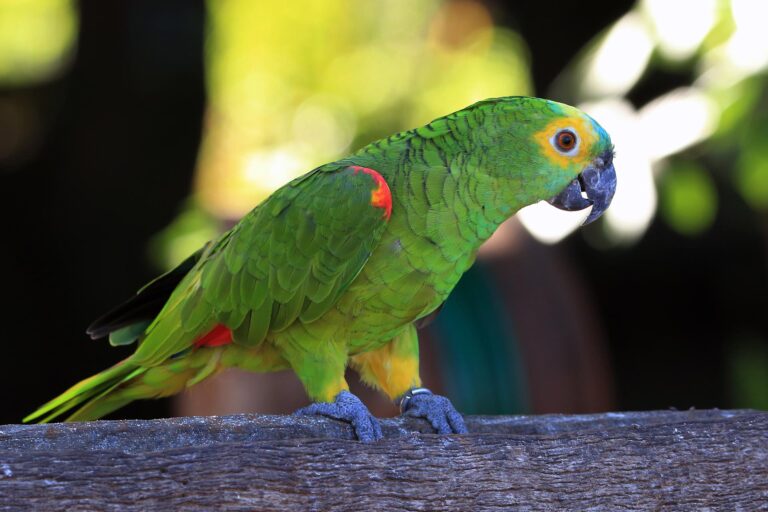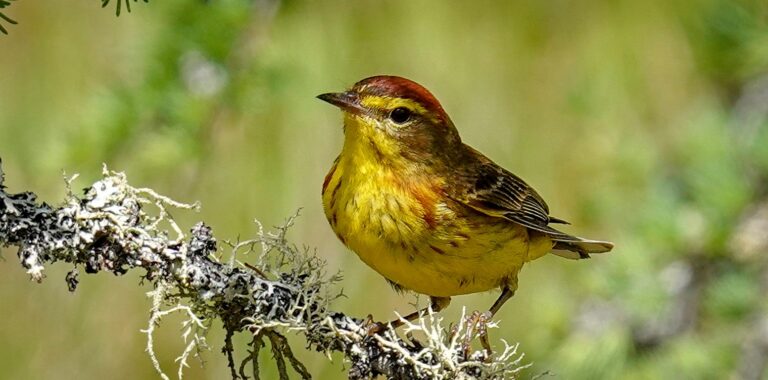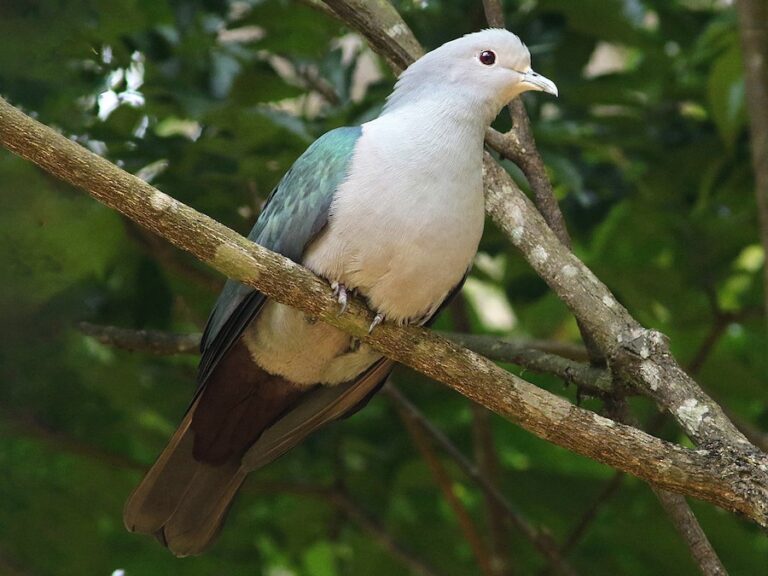Crows and Mockingbirds: A Look at These Smart Birds
Did you know crows are as smart as marine mammals and apes? This fact makes us want to learn more about bird smarts. Crows and mockingbirds are especially clever, showing off their brain power.
These birds are not just smart; they also live in groups. They work together and solve problems. This shows they are more than just birds. Let’s see how smart they are.
The Intelligence of Birds
Birds are smarter than we think. They have cognitive abilities that are like those of mammals. Crows, ravens, jays, and magpies are the smartest birds. They solve problems and show clever behaviors.
Each bird is clever in its own way. Parrots can solve problems and talk like humans. Woodpeckers and jays remember where they hide food. This shows how smart they are.
Some birds work together. Harris’s hawks hunt in groups. Crows work together to scare away predators. This shows they are very smart.
Birds can remember faces. Northern mockingbirds know who they meet before. They act differently based on who they meet.
Birds are good at solving problems. Bald eagles try different ways to hunt. They use tools like shrikes and green herons. This shows they are very smart.
There are over 10,000 bird types. Each one is different. Scrub jays plan for the future by hiding food. This shows they are smart.
Even simple birds are smart. Pigeons find their way home from far away. Chickens know who their friends are and talk to each other.
Birds are very smart. They challenge what we thought we knew. Studies keep showing how smart they are. This makes us admire them even more.
Understanding Bird Intelligence
Scientists use many ways to study bird smarts. They watch bird behavior in the wild. This helps them see how birds solve problems.
Birds with big heads can think better. Some birds even sleep like humans do. For example, the White-crowned Sparrow can fly over 3,000 miles back home.

Some birds, like the Black-capped Chickadee, talk to each other in complex ways. Rufous Hummingbirds remember where to find food, showing they can manage resources.
Studies show birds can plan, learn, reason, and even feel empathy. Crows and parrots are very smart. They use tools and solve problems.
African Gray Parrots can even talk like humans. They remember things for a long time. North Island Robins can recall tasks after a while.
Birds like the Egyptian Vulture use rocks to get food. The Fork-tailed Drongo tricks its prey, showing it’s not just instinct.
To understand bird smarts, we look at many angles of cognitive research. Birds use both instinct and learning to survive.
Smart Bird Species: Corvids and Beyond
Corvids are at the top when it comes to smart birds. This group includes crows, ravens, jays, and magpies. They are known for their clever minds.
Studies show they can solve problems, plan, and even work together. For example, the New Caledonian Crow makes tools. It uses sticks and leaves to get insects.
Crows also remember human faces for a long time. They teach their young to know who to be careful of. Clark’s Nutcracker can remember where it hid seeds months ago.
Other smart birds are the Acorn Woodpecker and the American Robin. The Acorn Woodpecker stores acorns in holes and gets them back with ease. The American Robin knows human faces to keep its nest safe.
The Northern Mockingbird is great at copying sounds. It changes its calls based on what it hears.
The table below shows some amazing things smart birds can do:
| Bird Species | Intelligence Trait | Example of Behavior |
|---|---|---|
| New Caledonian Crow | Tool-making | Crafts sticks into hooks to extract bugs |
| Crow | Facial recognition | Remembers human faces for years |
| Clark’s Nutcracker | Memory | Stores and remembers 30,000 seeds |
| Acorn Woodpecker | Storage | Stores acorns in thousands of holes |
| Northern Mockingbird | Mimicry | Imitates various environmental sounds |
| Raven | Problem-solving | Solves multi-step puzzles efficiently |
| Green Heron | Tool use | Uses bait to lure fish for hunting |
Other smart birds include blue jays and woodpecker finches. Hummingbirds remember where to find food all year. These birds show how smart and varied the bird world is.
Crows and Mockingbirds: A Closer Look
Crows and mockingbirds show us how smart and flexible they are. Their special ways help them survive and live together in different places.
Unique Behaviors of Crows
Crows are very smart. They hunt together to catch food better. They live in groups and care for each other.
They also fight off big birds like hawks to keep their home safe. This shows they are brave and work together.
Unique Behaviors of Mockingbirds
Mockingbirds are amazing for their songs. They can sing over 200 songs and even mimic other birds. This helps them mark their territory.
When it’s nesting time, they get very protective. They fight off crows and hawks to keep their babies safe. Males even build many nests for the females to choose from.
| Bird Species | Unique Behaviors | Population in the U.S. |
|---|---|---|
| Crows | Cooperative hunting, mobbing predators | Approx. 7 million |
| Mockingbirds | Mobbing behavior, mimicking songs | Approx. 32 million |
Crows and mockingbirds are among the smartest birds around. Studying them helps us understand bird life better.
Cooperative Hunting and Foraging
Cooperative hunting and foraging are key parts of bird social behavior. This is especially true for smart birds like crows. They hunt in groups, using strategies that help them catch more prey.
When crows hunt together, they do better. They work as a team to find insects, making hunting more efficient. Their ability to talk to each other in groups helps them succeed.
Mixed-species foraging flocks show the complexity of bird social behavior. In these groups, birds like the greater racket-tailed drongo in Sri Lanka use sounds to attract other birds. This helps them find food together.
In places like the North Temperate Zone and the Neotropics, some birds lead these foraging groups. For example, Paridae species like tits and chickadees start these groups outside of breeding season. This leadership makes hunting safer and more effective for everyone.
But, joining these groups can be hard for some birds. They might leave good places to eat or change how they forage. Understanding these challenges helps us see how birds adapt to living together.
| Aspect | Details |
|---|---|
| Benefits of Cooperative Hunting | Increases hunting success, improves food access, enhances group vigilance |
| Mixed-Species Flocks | Form around a nuclear species, utilize vocal mimicry, increase spotting efficiency |
| Costs of Joining Flocks | Leaving optimal feeding areas, altering foraging strategy |
| Leadership in Flocks | Species like tits and chickadees lead in North Temperate Zones, enhancing safety |
Complex Problem Solving in Birds
Birds are amazing, especially in solving problems. The American Crow and New Caledonian Crow show off their smartness. They make tools from sticks and leaves to get insects from hard spots.
The Clark’s Nutcracker can remember where it put 30,000 seeds. It recalls these spots months later. Acorn Woodpeckers also store acorns in holes. They find them when they need to, showing their smart problem-solving.
Harris’s Hawks hunt together, catching bigger prey. Ravens work with wolves to find food. This shows their smart teamwork and problem-solving.
Green Herons use insects to catch fish. Woodpecker Finches use cactus spines to hunt. These birds show they are as smart as some primates.
In short, birds solve problems in many ways. This shows they are very intelligent. Their brains are full of clever ideas.

Mimicry and Its Significance
Bird mimicry is very important for many bird species, especially mockingbirds. Mockingbirds can mimic sounds and learn up to 350 songs. This helps them talk to each other and protect their territory.
The more songs a mockingbird knows, the better its territory. This territory has food like insects and fruits.
Mockingbirds as Master Mimics
Northern Mockingbirds are great at mimicking sounds. They sing from high places like house tops and telephone poles. They show off by flying with white patches on their wings.
They can also mimic other birds’ calls. This helps them talk to others and keep away predators like hawks and snakes.
The Mimicking Behavior of Other Birds
Not just mockingbirds mimic sounds. Blue Jays can mimic hawk calls to protect their food. In Europe, male Marsh Warblers learn bird sounds in Africa.
Vesper Sparrows and House Wrens sometimes sing like Bewick’s Wrens. This shows how common mimicry is in birds.
Memory and Food Caching
Crows and mockingbirds have amazing memories. They use their brains to find food when it’s hard to get. Their memories help them store and find food, keeping them alive.
Long-Term Memory in Crows
Crows remember faces and share this info with friends. A study showed they remember faces for up to five years. This shows how important memory is for them.
They also remember where they hide food. This helps them find it when they need it most.
Food Caching Techniques in Mockingbirds
Mockingbirds have special ways to hide food. They hide it in different spots to make sure they can find it later. This shows how smart they are.
Some birds hide food in trees or thorns. Others make holes in trees to attract insects. This shows how they use their brains to survive.
Looking at how crows and mockingbirds remember things is really interesting. It shows how smart birds can be and how they survive.
| Bird Species | Memory Use | Food Caching Techniques |
|---|---|---|
| Crows | Recognize faces and remember locations for years | Store food in multiple locations for future retrieval |
| Mockingbirds | Memorize threats, adapting social behaviors accordingly | Use trees and thorns to stash food, returning later to eat |
| Northern Shrikes | Store food based on past experiences | Secure food in tree crotches and on thorns |
| Yellow-bellied Sapsuckers | Identify suitable feeding sites based on memory | Create sap wells to attract insects for later feeding |
Facial Recognition in Birds
Birds can recognize faces, showing their smart thinking. Crows and mockingbirds are especially good at this. They can tell different humans apart, helping them stay safe.
Female Northern Mockingbirds can tell who is friendly and who is not. They move away more when they see someone they don’t know. This shows they can learn and remember.
Mockingbirds get better at knowing who to be scared of over time. They can tell if someone is a threat after just a few meetings. This shows they are very smart.
Crows also know when to be scared of humans. They make loud noises and act aggressively when they see someone they don’t trust. This shows they understand their world well.
The Role of Social Structure in Bird Intelligence
Learning about bird social structure helps us understand intelligence in social birds. Birds like crows and mockingbirds get smarter because of their friends. They use their friends to survive, which makes them smarter.
Northern mockingbirds can remember who is dangerous. They remember past behaviors. This shows they are very smart because of their friends.
Crows live in big families that last for many years. These families work together, like when they mob predators. This teamwork shows how smart they are.
Harris’s hawks hunt together like a family. They work like lions and wolves. This teamwork helps them catch food and stay safe.
Leaders in bird groups get more food and can have more babies. In chicken groups, the strongest hens get more food. This helps the group work better together.
| Species | Cooperative Behavior | Social Structure |
|---|---|---|
| Northern Mockingbirds | Recognize individuals and their past behaviors | Utilize social networks for survival |
| Crows | Mobbing predators with peers | Structured family groups across generations |
| Harris’s Hawks | Hunting in family packs | Similar to social mammals like wolves |
| Chickens | Dominance affects food access | Hierarchical social structure |
The smartness of these birds comes from their friends. Older birds often lead, which shapes their social world. This shows how important friends are for their brains to grow.
FAQs
Q1: What do mockingbirds eat?
Mockingbirds eat insects, fruits, and seeds.
Q2: Where do mockingbirds live?
Mockingbirds live in North and Central America, preferring open areas with shrubs and trees.
Q3: Are mockingbirds aggressive?
Yes, mockingbirds can be aggressive, especially when defending their nests.
Q4: Are mockingbirds common?
Mockingbirds are widespread and commonly found in their range.
Q5: Are there loons in Nevada?
Loons are rare in Nevada but may appear near large water bodies during migration.
Q6: What is the Spiritual Meaning of Crows and mockingbirds?
- Crows often symbolize transformation, intelligence, and mystery.
- Mockingbirds symbolize protection, communication, and joy.
Final Reflections
Crows and mockingbirds are very smart birds. They have complex social and behavioral strategies. This shows how important they are in the bird world.
They can solve problems, mimic sounds, and talk to each other in special ways. These birds affect their ecosystems a lot. They also make researchers and bird lovers very curious.
Studying these birds is key to learning more about their intelligence. Mockingbirds get aggressive when they breed. They can remember people and defend their territory.
Crows can face many challenges and solve them. This makes us wonder about their evolution. It shows how smart they are.
Watching crows and mockingbirds helps us understand wildlife better. We can live in harmony with these amazing birds. This way, we learn more about nature and appreciate bird life more.






